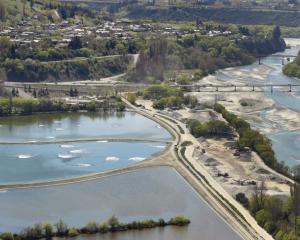Cow effluent monitoring is among issues being raised by the Queenstown Lakes District Council in response to proposed changes to the Otago region's rural water quality strategy.
The Otago Regional Council (ORC) plans to release proposed plan change 6a - water quality (PPC6a) - for public consultation on March 31, but has first circulated the draft form to territorial authorities for initial consultation.
It was formally received by the QLDC strategy committee yesterday, with some councillors raising concerns about aspects of the proposal.
A senior council policy analyst's report said the "effects-based approach" would set permitted discharge levels for things like nitrogen and sediment, instead of controlling land-use activities.
Discharges "which have an obvious adverse effect" would be prohibited, but the "permissive regime" raised issues around monitoring and enforcement, the report said.
"The process removes the need for relentless consenting, but also places greater emphasis on the individual landowner to ensure they are not open to enforcement action and prosecution."
Cr Cath Gilmour called for more information about how farmers would be educated and what equipment would be made available to them, also saying the proposal overlooked several concerns.
"The riparian protection is not very strong - it's not saying you can't let cows go and poo in the streams and we know the riparian strips are pretty vulnerable ... so why would we allow this?"
The committee resolved to raise some of the issues discussed in a letter to the ORC, before PPC6a was released for public consultation.
In the meeting's public forum, Otago Conservation Board member Susan Stevens, of Gibbston, raised concerns about the effects-based strategy.
Ms Stevens said it was an "abandonment of the well-tested principles used throughout New Zealand", with the proposed E.coli bacterial contaminant limits of particular concern.
"The proposal to use a relatively high national median value ... when most of the waterways are relatively clean seems to be a backward step and is setting the bar very low," she said.
"Since monitoring is already being undertaken for all the major rivers and streams, the [conservation] board recommends using these historic records to set specific acceptable limits and goals for improvement for each waterway, rather than dumbing down our waterways to the highest common denominator [the national median value]."
The proposed limit provided no incentive for farmers to improve water quality and the board had questions about the level of monitoring which would be undertaken, she said.
The board did support the proposed descriptive standards for the general appearance of waterways as "odourless" and "sediment-free" waters, with vegetation not stripped off banks, she said.












